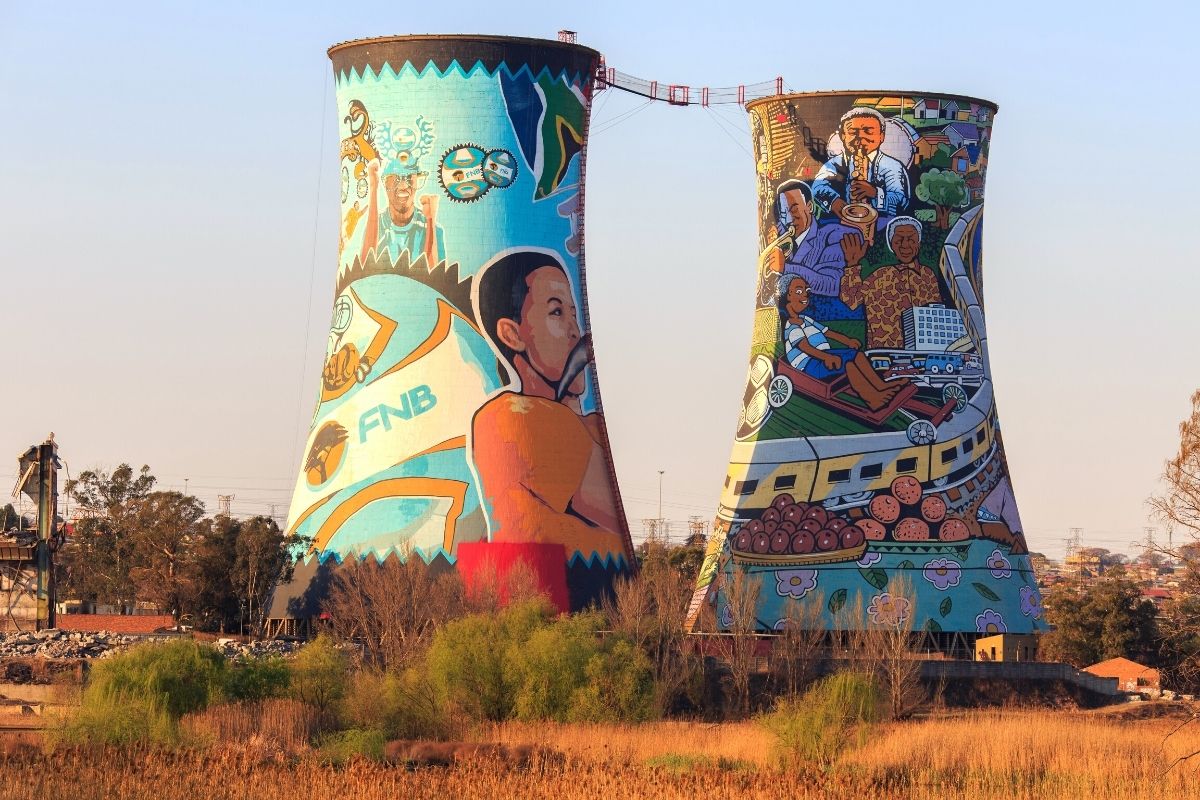5 Easy Facts About Johannesburg North Attractions Described
5 Easy Facts About Johannesburg North Attractions Described
Blog Article
Things about Johannesburg North Attractions
Table of ContentsOur Johannesburg North Attractions DiariesFacts About Johannesburg North Attractions RevealedHow Johannesburg North Attractions can Save You Time, Stress, and Money.The Main Principles Of Johannesburg North Attractions Johannesburg North Attractions for DummiesSome Known Questions About Johannesburg North Attractions.
The city owes its location to the existence of a much more precious resource: gold. The city expanded on the side of the Witwatersrand Key Reef, a subterranean stratum of gold-bearing quartz-silica empire that arcs for numerous miles beneath the Highveld. The majority of the gold mines in the city stopped procedure in the 1970s, yet in its day the Witwatersrand gold sector represented greater than 40 percent of the world's yearly gold production.Johannesburg has a temperate environment. Summer temperature levels average concerning 75 F (24 C); winter months temperature levels balance about 55 F (13 C) and only sometimes dip listed below cold. The city takes pleasure in about 8 hours of sunlight each day in both wintertime and summer. Rain averages about 28 inches (700 millimetres) per year, yet the overall varies substantially from year to year.
What rainfall the city receives falls virtually exclusively in the summertime, commonly in spectacular late-afternoon electrical storms. Air pollution positions a significant issue, particularly in the winter season, when thermal inversions hinder the westward circulation of air from the Indian Ocean. Contamination is most serious in the largely cleared up Black towns on the city's perimeter, where several residents still count on coal for fuel.

Rumored Buzz on Johannesburg North Attractions
The equilibrium of the city is inhabited by whites. Holiday accommodation differs in personality and quality.
Physical growth, although somewhat limited by transportation, proceeded swiftly as immigration to South Africa, and Johannesburg specifically, boosted drastically. This problem was resolved in the 1930s when the auto was introduced in mass manufacturing to South Africa. Autos were, essentially, constrained to the rich, and permitted them to move to the north of the city and commute right into the centre.
A lot of poor suburbs were combined, with bad blacks and whites living with each other, although the rich suburbs were usually booked for whites.
The estimated population of the region is 200,000, [] The number of individuals living in the internal city on a casual basis is unknown, as many are illegal immigrants. A lot of higher-income citizens and white people have actually relocated to the north suburban areas and have been changed by lower-income black people. The joblessness, education and learning, and age accounts of the location are all unknown, as a result of the problem of obtaining trustworthy info regarding the location.
3 Simple Techniques For Johannesburg North Attractions
Yeoville and Bellevue have a mix of visit house buildings and solitary property units on small lots. The area is located on a mountainous divide that runs from eastern to west.

Johannesburg Stadium, a training school for both the Golden Lions and Orlando Pirates, is surrounding. The eastern suburban areas of Johannesburg lie in the city's 7th [] and 9th [] areas. The area is additionally functionally incorporated with East Rand border communities outside of the main limit of Johannesburg, such as Bedfordview and Edenvale (both component of Ekurhuleni Metropolitan Municipality).
An Unbiased View of Johannesburg North Attractions
R. Tambo International Flight Terminal). The eastern residential areas are some of the earliest areas of Johannesburg, there are big areas of Jewish and other European backgrounds, most of the population is English speaking. There are three fairway as well as a number of secured ridges with viewsites. There are several well-developed and up-market entertainment and shopping locations in the east such as the Eastgate Mall and the Greenstone shopping center.
The location is mostly made up of old "matchbox" homes, or four-room residences constructed by the government, that were constructed to provide economical lodging for black workers throughout apartheid. Soweto is an abbreviation, representing "South Western Townships". Road after street around is lined with matchboxes; nevertheless, there are a couple of smaller locations where thriving Sowetans have actually developed homes that are much more similar in stature with those in more upscale suburbs.
Hostels are an additional popular physical attribute of Soweto. Originally constructed to house male migrant workers, lots of have been improved as anchor homes for couples and family members. The N1 Western Bypass skirts the eastern boundary of Soweto. The suburb was not historically enabled to develop employment centres within the location, so mostly all of its citizens are travelers to navigate to these guys various other parts of the city.
What Does Johannesburg North Attractions Mean?
The N1 Western Bypass connects the north suburban areas with the north-western suburbs. The residential locations in the north residential areas are mainly official, with no significant areas of casual housing, or housing that lacks a long-term framework. This is a well-known area, there is a pattern of land usage change from household to commercial, especially along major arterial roads and around established nodes.
The area is well connected to roadway networks, specifically along the north-south axis developed by the M1 and N1. Roadways to the east and west are less well developed, as there are no freeways taking a trip because direction. Towards the northern boundary of the city, the thickness of development lowers, leaving huge areas of primitive land around Midrand.
Indicators on Johannesburg North Attractions You Need To Know
, which is located on a hill neglecting the inner city and Hillbrow.
Report this page